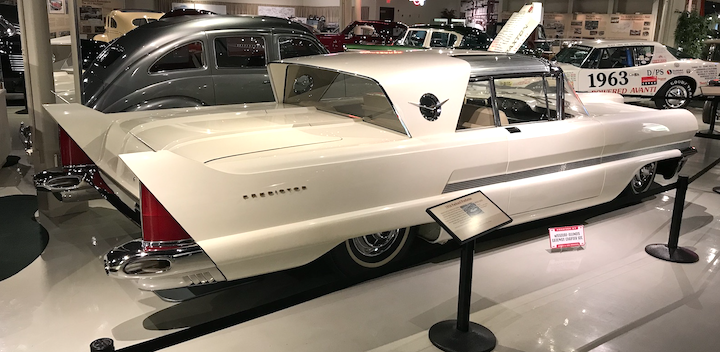By the mid-1930s Stout was back into automobile work, creating the Scarab -- what some consider the precursor of the minivan. Sources on the Internet mention that the Scarabs were essentially custom-built, no two being identical. They might be regarded as a more practical form of Buckminster Fuller's three-wheel Dymaxion car of 1933.
A 1935 Scarab can be found in the Studebaker National Museum in South Bend, Indiana where I recently took the color photos shown below.
A poor-quality image of the first Scarab from 1934.
Interior view of that car.
Probably the 1935 Scarab shown in the museum.
Stout, at left, discussing a 1936 Scarab at a filling station.
There was a 1946 Scarab, shown here with Stout.
1935 Stout Scarab as seen in the museum, September, 2019. This unrestored car was owned by Wrigley chewing gum family of Chicago.
Front quarter view. The license plate letters refer to Philip K. Wrigley. Note the strongly raked (in plan view) windshield.
Rear quarter view. This Scarab was covered with fashionable 1930s parallel "speed lines." I find this aspect of the car the most interesting and best looking -- though not beautiful. The talon shape in white on the 1934 car is echoed here via sculpting.























































